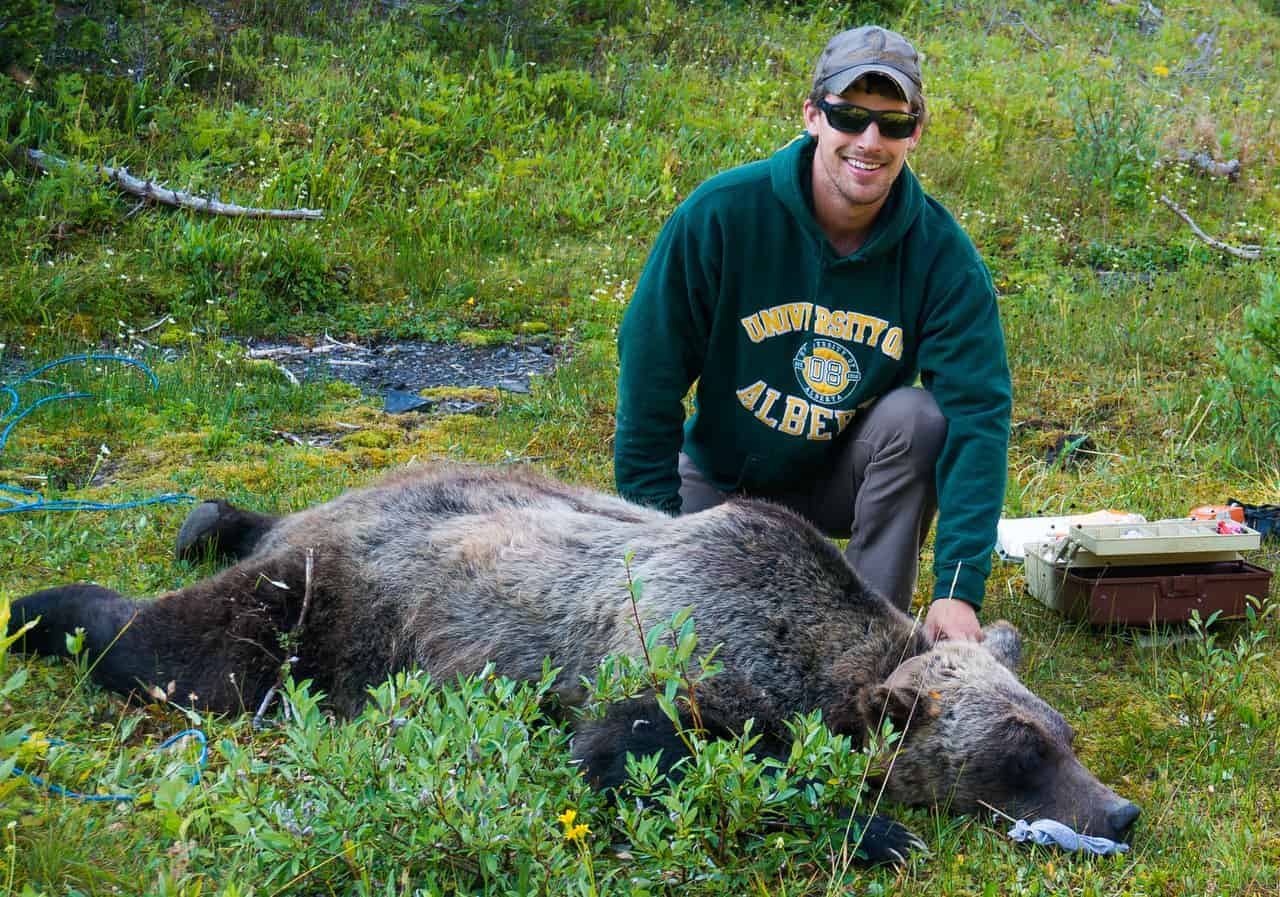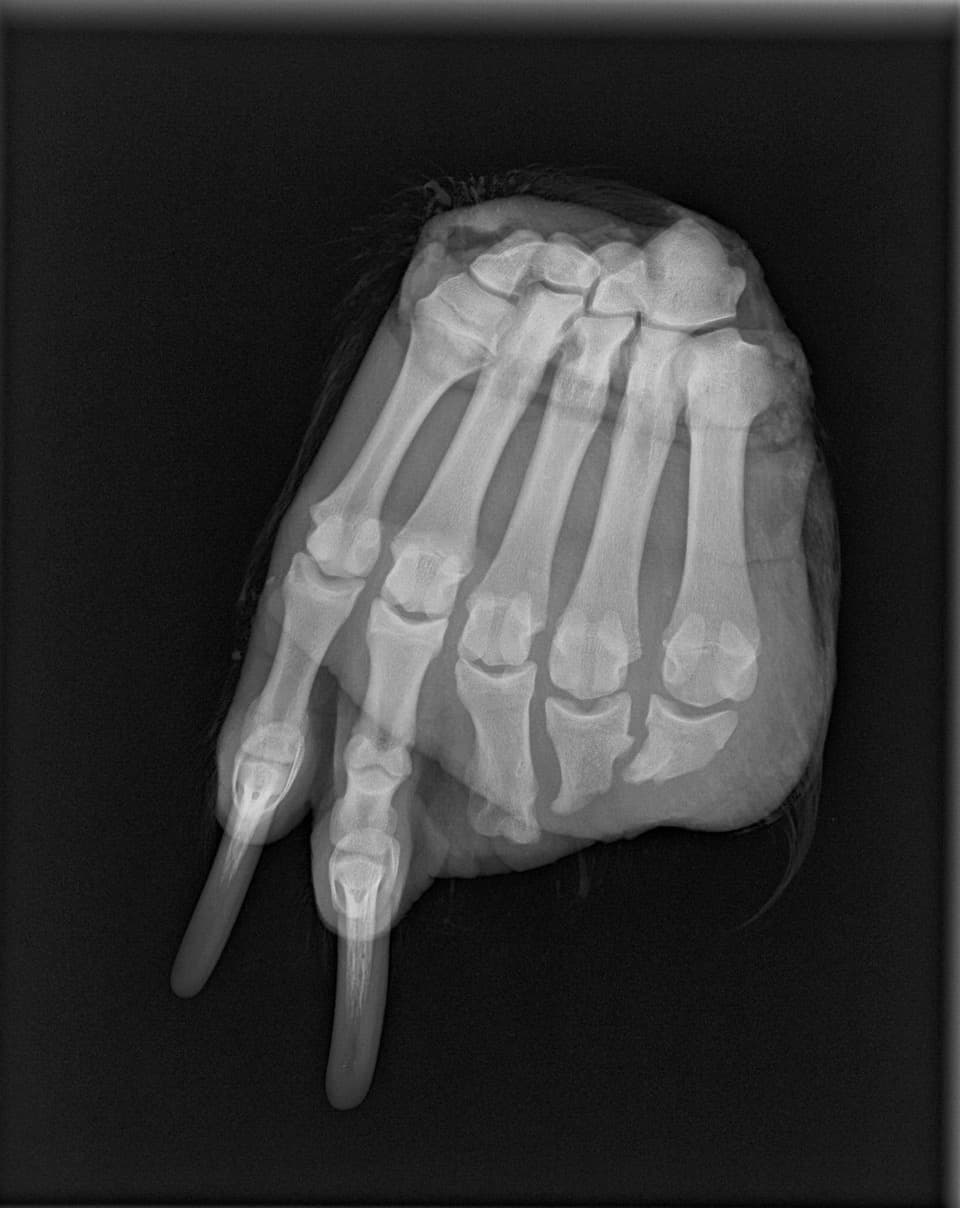Share this article
WSB: Furbearer traps can sever grizzly toes
When Clayton Lamb was trapping grizzly bears for a research project to understand bear survival and movement in southeast British Columbia, he noticed that some bears were missing their toes.
“The first bear could be explained as an accident or a one-off situation,” said Lamb, a wildlife scientist at the University of British Columbia and a TWS member. “But we ended up catching four bears out of about 60 that were missing toes. It just kept coming up too frequently to be chance.”
Lamb and his team discussed the situation with wildlife veterinarians. They ruled out birth defects or exposure to some type of toxin. Then, they had one of the feet x-rayed and saw that it was a straight break. The team considered that maybe the bears were getting their feet caught on the railway and getting run over by a train. But all of the bears had way too similar breaks and only on their front feet. When the researchers discussed the issue with trappers and hunters, they learned that bears had been getting caught in small traps often set for weasels, martens and other furbearers.
Lamb and his team wanted to get more evidence that these traps were responsible for grizzlies (Ursus arctos horribilis) with missing toes. But they didn’t want to hurt any bears in the process. In a study published in the Wildlife Society Bulletin, the researchers set up an experiment with four traps that only close about 10% of the way they usually do, so they wouldn’t snap off any toes. They then put a camera by the traps to watch for bear activity.

Clayton Lamb appears with a sedated grizzly bear. Credit: Bruce McLellan
The problematic traps were in 7-by-7-inch boxes with bait at the end, and they spring out to trap whatever enters. The food, they figured, was what was drawing the bears in. “One thing we know about bears is they like food,” Lamb said. “It’s their main interest in life.”
The footage showed bears putting their paws and noses on the traps. All four traps they set out were visited by grizzly bears, and two of the traps were even set off.
It was clear that traps could cause problems for bears. When this happened outside the experiment with real traps, the researchers believe traps cause bears’ toes to fall off over a period of several painful months. While most of the bears could go on with live normal lives, they face a lot of pain and could have challenges with digging or protecting themselves.
“I’m most concerned about the overall welfare of those individual bears,” Lamb said. “It’s not a population concern, but it’s still a concern. I think causing that level of suffering is not something that aligns with most of our land ethics.”
Some people suggested that better anchoring the traps so bears can pull out their toes instead of carrying away the traps could help, but when Lamb and his team tested this theory by placing a dead grizzly’s leg into a better anchored trap, they found it wasn’t always easy to pull the leg out.
“If I could pull it as hard as I could, not feeling the pain the grizzly would, and still can’t get it loose, there’s a sign this isn’t a sure thing,” he said. In addition, trappers may be more likely to come into contact with bears trying to get a trap off of their foot in this scenario, which can cause safety issues.

An x-ray of a grizzly foot shows missing toes. Credit: Steven Chapman
A more effective solution, he said, would be delaying the fall trapping season by two weeks until the end of November and beginning of December. That would allow bears to have denned so they won’t go into the traps. But Lamb said some trappers have shown pushback for that idea. One reason is that juvenile martens disperse during the earlier trapping season, and that’s one of the cohorts they target to avoid capturing too many adult females.
Another solution, he said, is to find an innovative way to create traps that could capture weasels and martens but not bear toes. British Columbia has already enforced rules for trappers to have restricted trap entrances in November. But Lamb said sometimes people don’t comply with the rules.
“The main goal here is to keep bear toes out of traps,” he said. “If we could find a solution to keep trappers trapping and bear toes safe, that’s great.”
This article features research that was published in a TWS peer-reviewed journal. Individual online access to all TWS journal articles is a benefit of membership. Join TWS now to read the latest in wildlife research.







